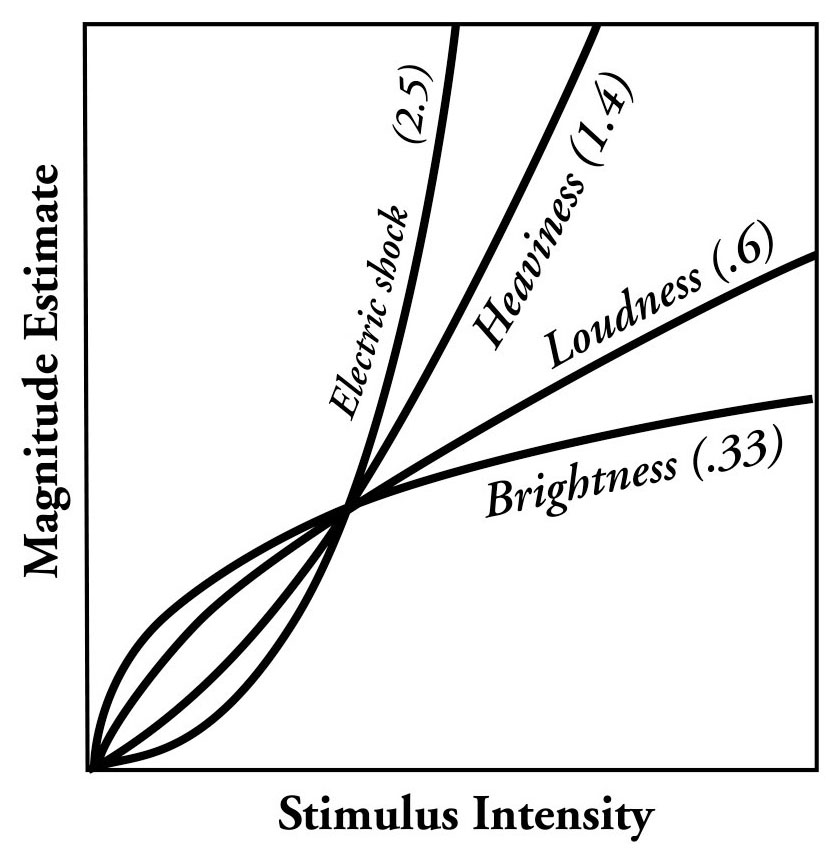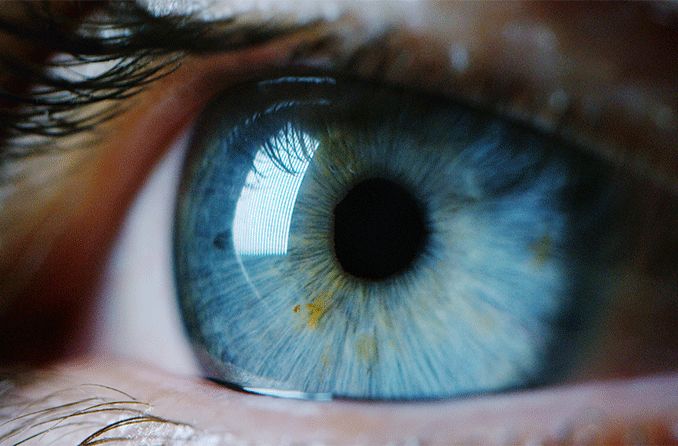Primary (feedforward, cortical) pathway
Retina ->
Thalamus ->
Primary visual cortex (V1) in occipital lobe
Subcortical pathways
How it works, how it develops, & why you should care
| Informal name | Source |
|---|---|
| Vision | Electromagnetic radiation |
| Audition | Mechanical vibration in air/water |
| Touch | Mechanical vibration of skin on surface |
| Vestibular | Rotation & linear acceleration of head |
| Olfaction | Chemical patterns in air/water |
| Gustation | Chemical patterns in mouth |
| Informal name | Source |
|---|---|
| Electroception | Electromagnetic radiation |
| Magnetoreception | Electromagnetic radiation patterns |
| Kinesthesia | Position, velocity, acceleration of limbs, body |
Edward H. Adelson (1991)
EM spectrum from Wikipedia
Source: https://www.cns.nyu.edu/~david/courses/perception/lecturenotes/color/color-slides/Slide14.jpg
Randeberg (2005)
Source: https://thebrain.mcgill.ca
Source: https://thebrain.mcgill.ca
“Webb’s first deep field (NIRCam image)” (n.d.)
Note
Retinal rods (green) & cones (blue)
Normal color vision vs. protanopic (color blind) vision; Source: https://en.wikipedia.org/wiki/Retinal_mosaic
Wikipedia
Retina ->
Thalamus ->
Primary visual cortex (V1) in occipital lobe
Subcortical pathways

https://en.wikipedia.org/wiki/Retinotopy

Contrast sensitivity function
Pelli-Robson Contrast Sensitivity Chart
Figure 4 from (R. O. Gilmore, Thomas, & Fesi, 2016)
Figure 21 from (R. O. Gilmore et al., 2016)




Wikipedia: Strabismus
(Figure 7 from Kiorpes, 2016). Characteristic amblyopic contrast sensitivity data from three macaque monkeys. Strabismic amblyopia (left) resulted from surgical alteration of the horizontal rectus muscles of one eye (data from Kiper and Kiorpes, 1994). Anisometropic amblyopia (middle) resulted from rearing with a defocusing lens over one eye (data from Kozma and Kiorpes, 2003). Deprivation amblyopia (right) resulted from rearing with one eye closed for 14 months (data from Harwerth et al., 1990). Redrawn from Kiorpes (2008).
(Figure 2 from Jandó et al., 2012)
(Figure 3 from Jandó et al., 2012)
Wikipedia: https://en.wikipedia.org/wiki/Congenital_cataract

“For me, one of the major attractions of visual science is the promise it holds for empirical attacks on the mind-body problem…”
“…that is, for working out meaningful ways to explain psychophysically defined visual functions on the basis of properties of the neural substrate….
…A critical locus or critical computation for a particular perceptual function can be defined as an anatomic or computational stage at which information concerning that function is lost or importantly reorganized…”
“or more poetically, as a stage or computation that leaves its mark on that perceptual capacity.”
“Part of the appeal of visual development is its potential for extending this promise. Visual functions mature because the visual substrate matures, and the causes of functional maturation undoubtedly lie in neural maturation.”
“But the length of the big toe matures too, and we do not see it as causal in relation to the development of grating acuity. The puzzle is, which of the many immaturities of the visual substrate provide the critical immaturities that limit a particular visual capacity at a particular age?”
| Parameter | Crawling Infant | Walking Infant |
|---|---|---|
| Eye height | 0.30 m | 0.60 m |
| Locomotor speed | 0.33 m/s | 0.61 m/s |
| Head tilt | 20 deg | 9 deg |
| Type of Locomotion | Ground Plane | Room | Side Wall | Two Walls |
|---|---|---|---|---|
| Crawling | 14.41 | 14.42 | 14.43 | 14.62 |
| Walking | 9.38 | 8.56 | 7.39 | 9.18 |
https://nyu.databrary.org/slot/7739/0,26634/asset/16747/download?inline=true
https://nyu.databrary.org/slot/7739/0,26134/asset/16749/download?inline=true
(Figure 1 from Kretch & Adolph, 2015)
(Figure 10.1 from Atkinson & Braddick, 2013)
(Figure 10.4 from Atkinson & Braddick, 2013)
The code and materials used to generate the slides may be found at https://github.com/gilmore-lab/csd-vision-course/.

Vision: How it works, how it develops, & why you should care